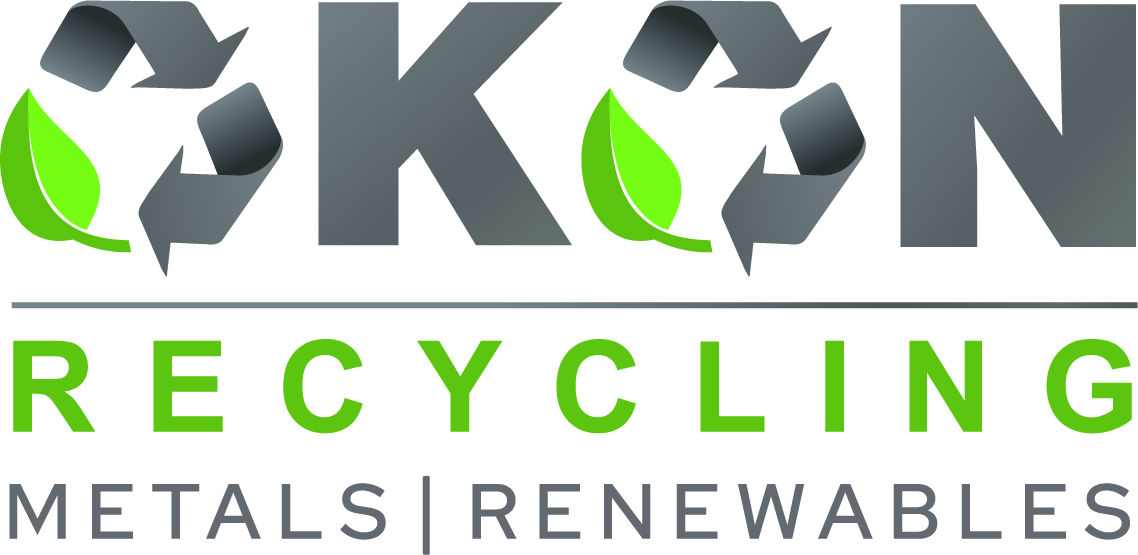5901 Botham Jean Blvd, Dallas, TX 75215
Exploring Copper Prices: How Much is Copper Per Pound?
April 13, 2025Have you ever wondered about the value of copper per pound? That old coil of wire in your garage or the pipes behind your walls might be more valuable than you think. Copper, often referred to as ‘Dr. Copper’ for its ability to indicate the health of the global economy, plays a crucial role in our daily lives and industries worldwide.
As of February 2025, copper is priced around $4.57 per pound, reflecting a complex interplay of global economic forces, market speculation, and industrial demand. This seemingly simple number has significant implications for recyclers, manufacturers, and consumers alike.
What drives these fluctuations in copper prices?
The answer lies in a fascinating web of factors, from bustling construction sites in emerging markets to innovations in electric vehicle technology.
The Global Copper Market: A Delicate Balance
Copper pricing exemplifies supply and demand dynamics. China, the world’s largest copper consumer, accounts for about 55% of global demand, driven by its construction and manufacturing sectors. Changes in Chinese economic policies or construction activity can affect the global copper market.
On the supply side, major copper-producing countries like Chile, Peru, and the Democratic Republic of Congo play pivotal roles. Disruptions in these regions, whether due to labor strikes, political unrest, or natural disasters, can quickly tighten global supplies and drive prices upward.
For example, in late 2023, the closure of First Quantum Minerals’ Cobre Panama copper mine removed a staggering 4 million tonnes from the world’s annual copper supply, highlighting how geopolitical events can impact the market.
The Green Energy Revolution and Copper Demand
As the world shifts towards renewable energy and electric vehicles, copper’s importance has grown. A typical electric vehicle requires about 80 kilograms of copper, nearly four times the amount used in a conventional car. This surge in demand is expected to push copper prices higher in the coming years.
Analysts at Goldman Sachs project copper prices could reach $6.80 per pound by 2025, driven largely by the green energy transition. This outlook presents both challenges and opportunities for the recycling industry, as the value of scrap copper is likely to increase significantly.
Economic Indicators and Copper Prices
Copper’s price per pound is more than just a number—it’s a barometer for global economic health. Investors and economists closely watch copper prices as a leading indicator of economic trends. A rise in copper prices often signals growing industrial activity and economic expansion, while a decline may hint at an economic slowdown.
Factors such as interest rates, inflation, and currency exchange rates also play crucial roles in determining copper’s value. For recyclers and scrap metal dealers, staying attuned to these economic signals can mean the difference between a profitable venture and a missed opportunity.
Current Copper Price Trends

As of April 2025, the copper market shows dynamic price movements, reflecting the interplay of global economic factors and industry-specific developments. Current copper prices are around $4.45 per pound, demonstrating the metal’s resilience amid shifting market conditions.
Recent trends indicate relative stability for copper prices, with minor fluctuations driven by supply and demand dynamics. The live interactive chart of COMEX copper prices reveals the nuanced daily changes that characterize this essential commodity market.
Expert predictions for future price movements in the copper market are cautiously optimistic. The Chilean Copper Commission (Cochilco) projects an average copper price of $4.25 per pound for 2025, supported by supply constraints and steady demand. This forecast aligns with the broader industry sentiment of a tightening market.
Key Factors Influencing Copper Prices
Several critical factors are shaping the current and future landscape of copper prices. The global shift to green energy and electric vehicles continues to bolster demand, with copper playing a crucial role in these technologies. This change in consumption patterns is expected to exert upward pressure on prices in the medium to long term.
Supply-side dynamics are equally influential. Recent mine closures and limited investment in new ventures have led projections to indicate a substantial decline in copper stocks. Estimates suggest a 35% reduction in 2024 and a further 18% decrease in 2025, potentially creating a supply squeeze that could drive prices higher.
Macroeconomic factors also play a pivotal role in copper price trends. The anticipated interest rate reductions by the US Federal Reserve, potentially starting in July 2025, could stimulate economic activity and, by extension, copper demand. This monetary policy shift may contribute to a more favorable environment for copper prices.
Regional Market Insights
The global copper market presents a varied picture across different regions. In the United States, demand is expected to see modest growth, driven by government infrastructure projects and a focus on renewable energy. This tightening supply-demand balance is likely to support higher copper prices in the region.
China remains a critical player in the global copper landscape. The country’s ongoing commitment to green energy initiatives and the electric vehicle sector continues to drive significant demand. While short-term projections suggest some volatility, the long-term outlook for copper demand in China remains robust, with potential for price stabilization and growth.
Europe presents a more nuanced picture, with current market conditions described as weak, particularly in Germany, Europe’s largest consumer. However, demand from green energy projects offers hope, potentially offsetting sluggish performance in traditional sectors like manufacturing and construction.
Future Outlook and Price Predictions
Looking ahead, industry analysts forecast a bullish trajectory for copper prices. Goldman Sachs has revised its copper price forecast to $10,100 per metric ton (approximately $4.58 per pound) for the near future. This projection reflects the anticipated structural deficit in the copper market and the increasing demand driven by the global energy transition.
The long-term outlook appears even more promising. Fastmarkets analysts predict that by 2034, refined copper consumption will be significantly driven by sectors linked to the energy transition. They project a compound annual growth rate (CAGR) of 2.6% in total apparent demand for copper over the next decade, with energy transition sectors potentially growing at a CAGR of 10.7%.
As we move through 2025 and beyond, the copper market is poised for an interesting journey. While short-term fluctuations are inevitable, the underlying trends point towards a robust and potentially lucrative future for this essential metal. Investors, industry players, and policymakers should keep a close eye on these evolving copper price trends and their far-reaching implications.
The Impact of Recycling on Copper Prices
Recycling is not just an eco-friendly practice; it plays a crucial role in the global copper market. The recycling industry significantly influences copper supply, demand, and pricing. This circular economy approach shapes the copper landscape.
Did you know that recycled copper accounts for about 32% of the world’s copper supply? This figure highlights the pivotal role recycling plays in meeting global demand. As we explore further, we’ll uncover how this substantial contribution impacts market dynamics and pricing.
Supply and Demand: The Recycling Factor
Recycled copper, often called secondary copper, is a vital supplementary source to newly mined or primary copper. This additional supply helps balance market fluctuations and meet growing global demand. In fact, industry forecasts suggest that production from scrap is expected to grow at a compound annual growth rate (CAGR) of 4.2% over the next decade, outpacing the 2.1% CAGR anticipated for primary production.
The availability of recycled copper can significantly influence market prices. During periods of high demand or supply constraints from primary sources, recycled copper can alleviate pressure and stabilize prices. Conversely, an abundance of recycled copper in the market can potentially drive prices down.
| Aspect | Secondary Copper | Primary Copper |
|---|---|---|
| Growth Rate (CAGR) | 4.2% | 2.1% |
| Energy Requirement | 10-15% of primary | 100% |
| Environmental Impact Reduction | 86% lower than primary | Higher impact |
| Contribution to Global Supply | 32% | 68% |
Price Implications of Copper Recycling
The relationship between recycling and copper prices is complex. The availability of recycled copper can help moderate price spikes during supply shortages. This was evident during recent global supply chain disruptions, where recycled copper played a crucial role in meeting demand.
However, it’s important to note that recycled copper prices are closely tied to primary copper prices. High-grade copper scrap, such as Bare Bright Copper Wire, typically trades at a slight discount to newly mined copper. Recent data shows discounts averaging around $0.12-0.16 per pound, illustrating the strong correlation between recycled and primary copper markets.
Global Factors Influencing Recycled Copper Prices
Several global factors can impact the price of recycled copper:
- Economic growth in major consuming countries, particularly China
- Technological advancements in recycling processes
- Environmental regulations promoting recycling
- Geopolitical events affecting trade flows
- Energy costs associated with recycling processes
For instance, China’s recent policy changes regarding copper scrap imports have had significant ripple effects throughout the global market. The reclassification of high-grade copper scrap as a “resource” rather than “waste” led to a surge in imports, influencing both supply dynamics and prices worldwide.
The Future of Copper Recycling and Prices
Looking ahead, the outlook for copper recycling and its impact on prices remains optimistic. The increasing focus on sustainability and the circular economy is likely to drive demand for recycled copper, potentially supporting prices in the medium to long term. However, market participants should remain vigilant to short-term volatilities driven by geopolitical events and global economic conditions.
As the world transitions towards greener technologies, copper demand is set to soar. By 2030, copper demand for renewable energy technologies is expected to increase by a staggering 900% annually. This surge in demand will likely elevate the importance of recycling in maintaining market balance and influencing prices.
In conclusion, the impact of recycling on copper prices is substantial and multifaceted. As the industry evolves, the interplay between recycled and primary copper will continue to shape market dynamics, influencing prices and driving the global copper economy towards a more sustainable future.
Don’t let valuable metal go to waste. Contact Okon Recycling at 214-717-4083 to get expert insight, competitive rates, and professional service that turns your copper scrap into profit—quickly and responsibly.
